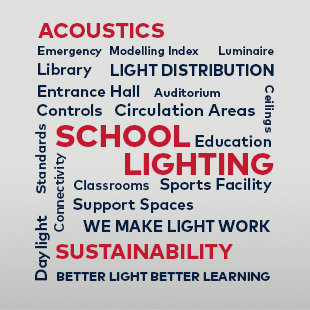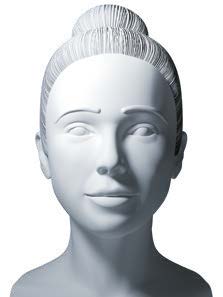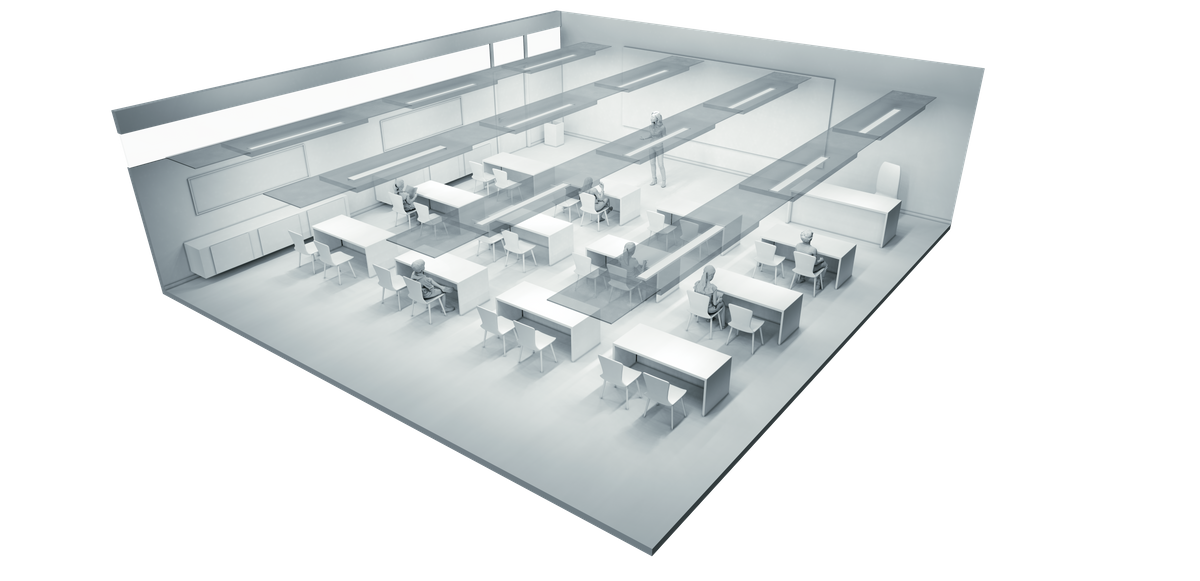10 questions to ask on every school lighting project
From classrooms to bathrooms and from corridors to cafeterias, here are the top things you need to be in control of

1. What standards apply?
The key European standard for indoor workplace lighting is EN 12464-1. Among other things, it sets out recommended light levels and glare limits for different areas and tasks. The Society of Light and Lighting’s Lighting Guide 5 offers guidance specifically for education, and there are other relevant standards for particular areas such as emergency lighting and acoustics (see questions 8 and 9).
2. How can you make the most of natural light?
Natural light is fantastic – and free. Schools should aim to use it as their primary source of light, and make sure it works hand-in-hand with artificial lighting. As well as being free, daylight supports comfort and concentration, and gives people a connection to the outside world. The use of simple controls including automatic dimming helps to save energy when daylight is available, while providing a good environment for learning.
“Consider how luminaires and controls can meet the needs of every space”
3. How will each different space be used?
When lighting a school, you may be asked to provide solutions for everything from classrooms to bathrooms, circulation areas and auditoriums. These all have different requirements regarding learning, appearance, safety and other considerations. Some spaces will need to be flexible, for example classrooms that can be reconfigured for group work or presentations, or assembly halls that can host a variety of different events. Consider how luminaires and controls can meet the needs of every space.
4. What are the ceilings like?
The height and type of ceilings will be a defining factor for any lighting installation. In high-ceilinged areas, it may be possible to use suspended fittings with direct/indirect elements, such as Thorn’s IQ Wave Suspended, which helps provide a balance of direct and diffuse light. Other areas will require surface-mounted or recessed fittings, so light distribution will need to be carefully considered. Ceiling height will also affect acoustics (see question 8).
“Lighting schools isn’t just about seeing desks and papers, it’s about seeing each other”
5. Will facial modelling be adequate?
 | Lighting schools isn’t just about seeing desks and papers, it’s about seeing each other. Good communication relies on good facial modelling, which is achieved by balancing diffuse and directed light. If light is too directional, shadows become too harsh, but if it’s too diffuse, then the space will feel bland and modelling of faces will not be clear enough. The modelling index is defined by the ratio of cylindrical illuminance to horizontal illuminance at head height. A ratio of > 0.3 and < 0.6 (or closer to 0.5 for teaching spaces) will ensure adequate modelling. |
6. How can energy consumption be kept low?
How much energy will your lighting solution consume? Good quality LED light sources use surprisingly little electricity, which helps keep lifetime costs down. LED products also last a long time and require minimal maintenance. Appropriate use of lighting controls will help to get energy usage down even further, reducing costs and related carbon emissions (see question 7).
“The choice of luminaires can have a big influence on the acoustics in a space”
7. How will the lights be controlled?
Whether it’s a classroom, corridor or auditorium, controls will help you get the most out of a space, making it flexible and efficient. Digital lighting management solutions are available for everything from single rooms to whole buildings. Thorn’s BasicDIM Wireless makes it possible to introduce controls without adding new wiring, and can be controlled from a mobile device, or from conventional switches.
8. Will the acoustics be right?
Acoustic control is about minimising reverberation to prevent echoes. Poor acoustics can make it hard to concentrate and hear what’s being said, so better acoustics contribute to better learning. The choice of luminaires can have a big influence on the acoustics in a space. For instance, Thorn’s Arena Symphony LED contains sound-absorbing features to minimise echoes, and is fully compliant with European acoustic regulations, such as EN ISO 3382-3. |  |
“Quality lighting products are built with the future in mind”
9. Will people be able to see their way out in an emergency?
Schools, like other buildings, are legally required to provide emergency lighting, and to make sure it is regularly tested and maintained. Whether emergency functionality is built into standard fittings or provided by dedicated luminaires, it needs to be designed in such a way that people can make their way out of the building quickly and safely in the event of a power failure. The best emergency lighting offers longer lifetime, maximum flexibility, high efficiency with the latest LED technology, time saving with ease of installation and maintenance, by an efficient design process with the right selection of luminaires, sensors and control units.
10. Is the lighting futureproof?
How long will the products that you’ve installed last? Are they from a reliable manufacturer and is there a guarantee? Can the installed solution be adapted later to incorporate controls or other functionality? Quality lighting products are built with the future in mind. For instance, Thorn’s new Omega Pro 2 ceiling fitting can be enhanced with C-Kit, a range of optional plug-and-play accessories that provide extra functionality such as wireless connectivity and emergency lighting features, so that the lighting installation can be enhanced or adapted to changing needs over time.
“Lighting is not about good teaching, it is about effective learning”
